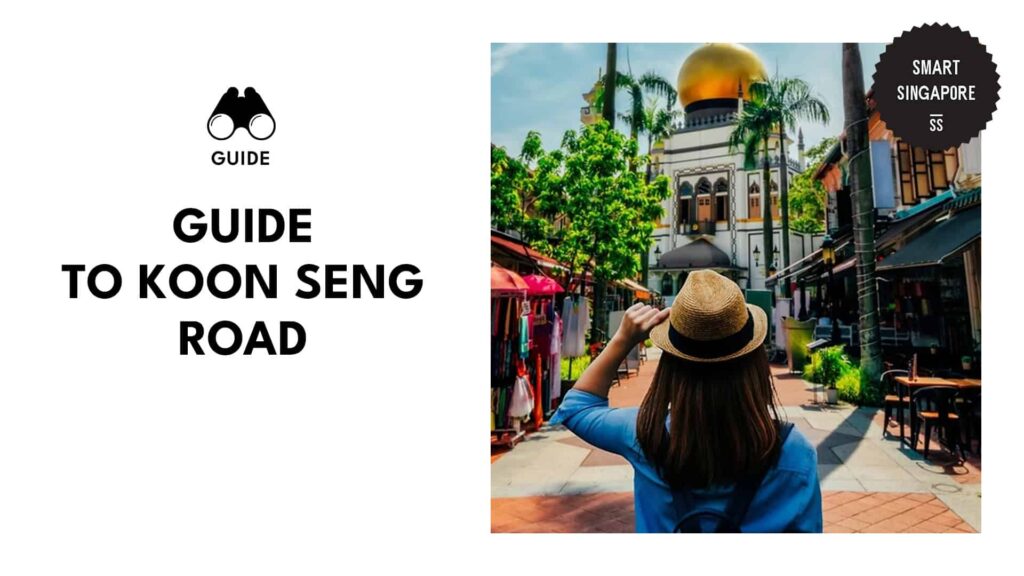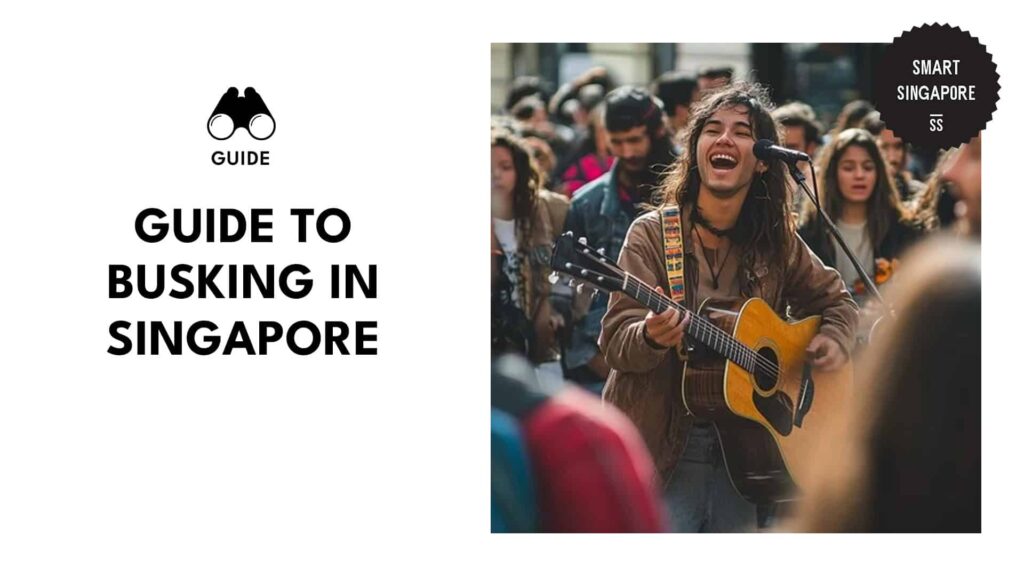Categories > Guides and Tips
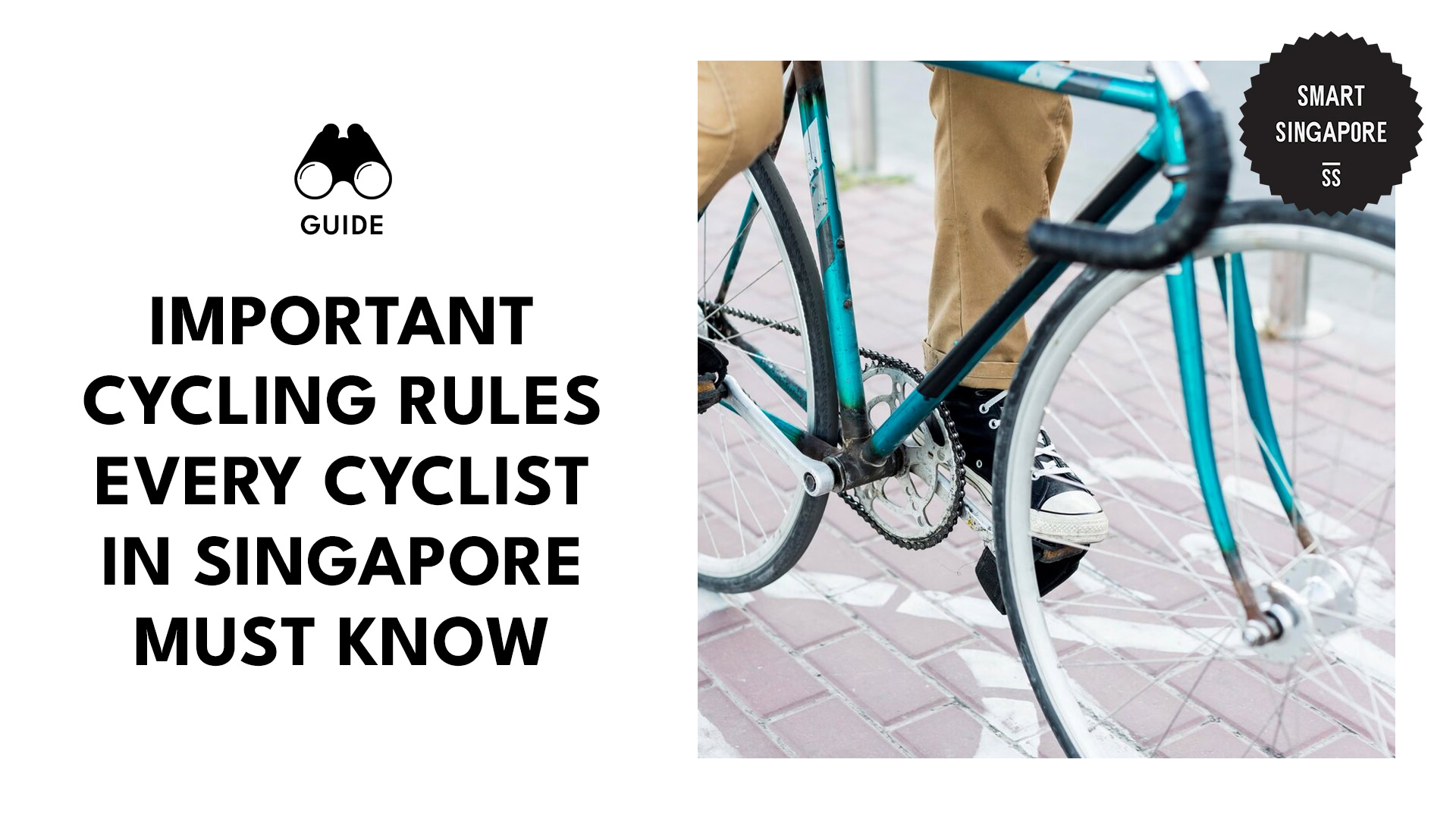
Important Cycling Rules Every Cyclist in Singapore Must Know
- What are the cycling rules and laws of Singapore?
- Bike lines should not exceed 5 cyclists in a single file
- Keep a distance of at least 30 metres from other cycling groups
- Always wear your helmet
- Stay on the left lane on roads
- Always signal your intentions
- Absolutely no towing of devices on the road
- Attach device lights properly
- Get off the device if the road becomes too steep for you
- Maintain your speed when going downhill
- Wear bright-coloured clothing
- Don’t use your phone or other electronic devices while on the road
- Keep off of road tunnels and expressways
- Park your bicycles in designated parking spaces
- Don’t carry passengers beyond the capabilities of the device
- Who regulates cycling activities in Singapore?
- Where can I cycle in Singapore?
- What are the device and user requirements for cycling?
- Manual Bicycles and Three-Wheeled Pedal Cycles
- Manual Recumbents
- Motorised Personal Mobility Devices
Singapore is renowned for its exquisite cuisine, luxurious shopping malls, world-class attractions, and, interestingly, its strict rules and hefty fines.
If you’re a rookie traveller and love to cycle, do yourself a favour and brush up on the most basic rules when exploring the city on wheels. The last thing you want is to be flagged by the police for not knowing the right bike lanes, right?
To put your mind at ease, here’s a brief guide to the most important cycling rules in Singapore!
What are the cycling rules and laws of Singapore?
Bike lines should not exceed 5 cyclists in a single file
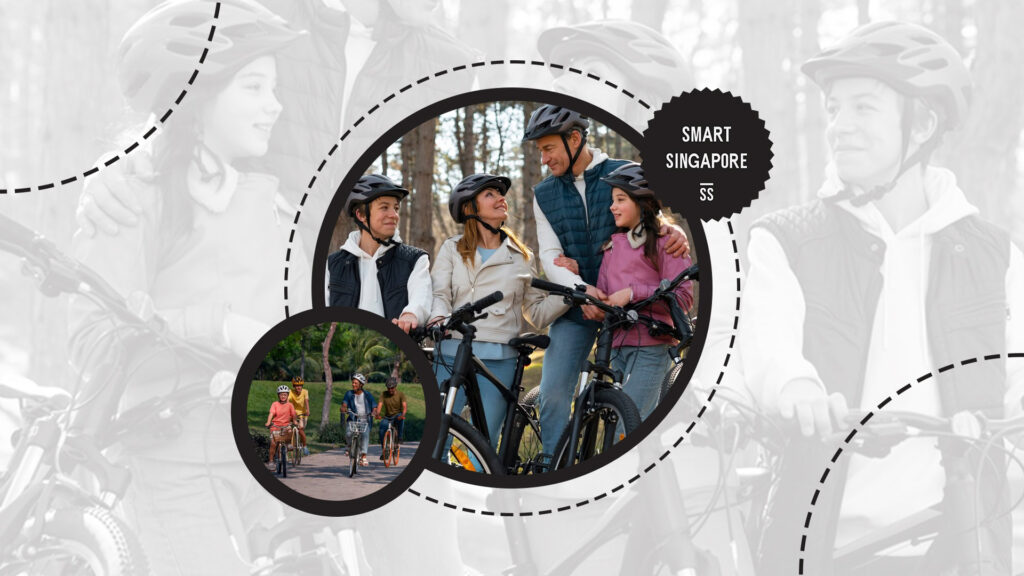
If you’re biking with a group, make sure to cycle within a single file but not exceeding 5 cyclists at a time. If you’re a group of more than 5, you can cycle in two lines, provided that each lime does not exceed 5 cyclists.
It’s important to remember this rule if your cycling group is riding along roads with other four-wheeled vehicles. Larger groups riding 2 abreast should maintain at least a foot or more in length from each other.
Keep a distance of at least 30 metres from other cycling groups
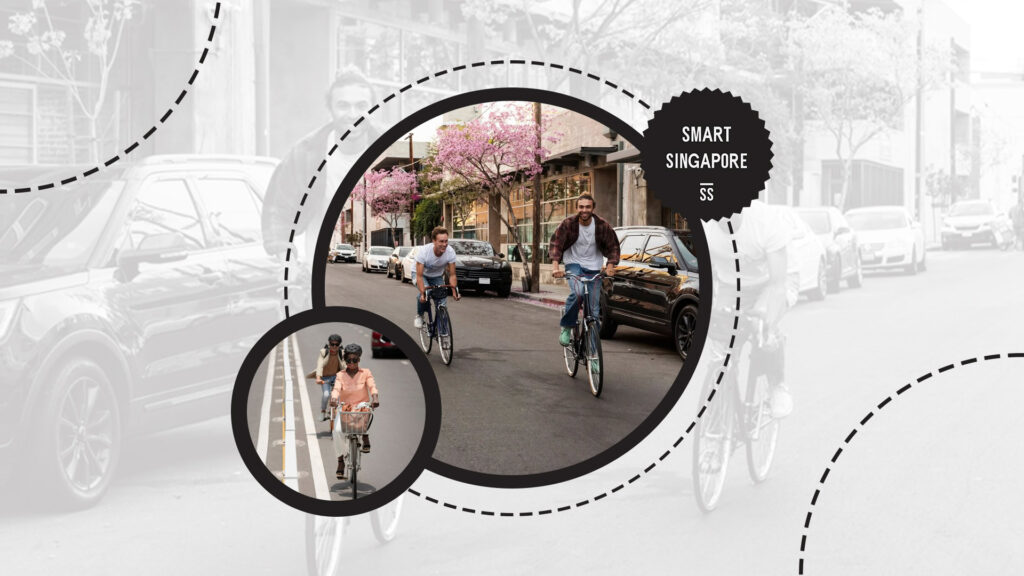
To avoid overcrowding, separate cycling groups should maintain a distance of about 30 metres from each other. Not only will this help other cyclists recognize that you’re from a different group, but it also prevents cycling trails from getting overcrowded.
Always wear your helmet
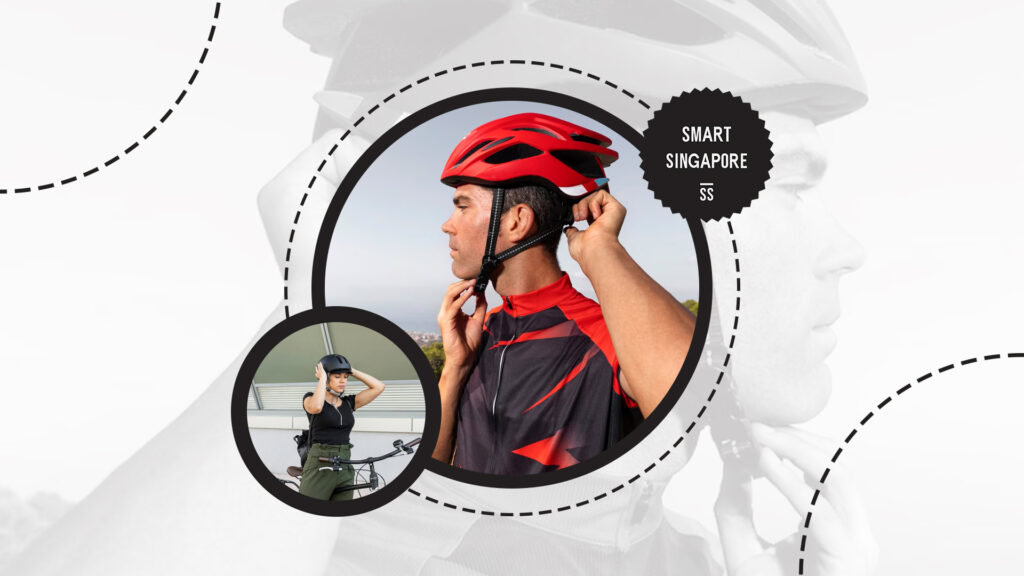
Every cyclist is required to wear a helmet when cycling on roads and public paths. This includes children, accompanied by an adult or their parents.
Refusing to wear a helmet while riding a bicycle can incur a $1,000 fine or jail time of about 3 months. People who catch cyclists not wearing helmets when cycling on public paths and roads are encouraged to report them to the proper authorities.
It’s also important to note that you should get a helmet that complies with international standards for safety set by accreditations like Snell.
Stay on the left lane on roads
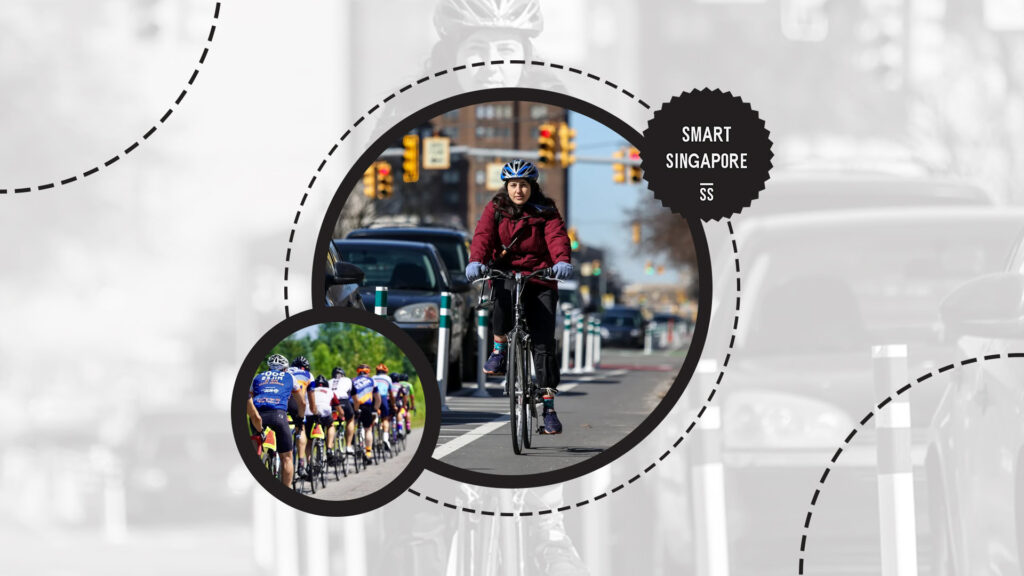
Cyclists are required to keep left on roads or wherever possible, especially when there are bus lanes and if there are no designated cycle lanes. On roads, the leftmost lanes are for slow-moving vehicles, so keeping left gives way to faster-moving vehicles.
Moreover, devices to be used on roads should not exceed the maximum weight requirement. Do not attach non-essential accessories (attachments that only provide aesthetics) when riding on roads, so as not to distract other drivers.
Always signal your intentions
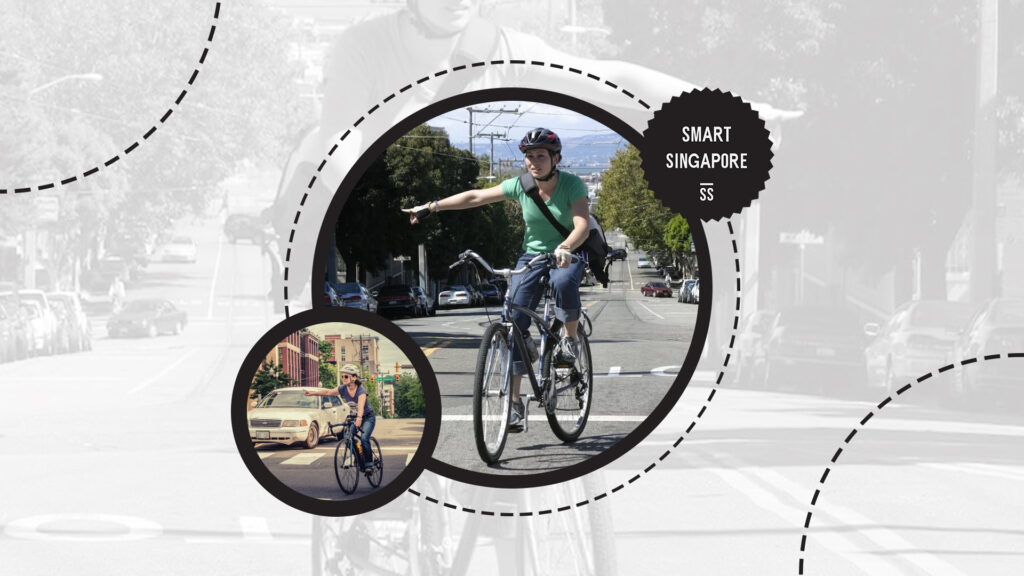
Cyclists should signal their intentions while on the road. If you’re going left, signal with your arm that you’re going left, and do the same if you’re going right.
If you’re riding with a cycling group and need to slow down, simply extend your arm and move it up and down.
Remember to use your hand signals about 50 metres before your intended turn or junction.
Absolutely no towing of devices on the road
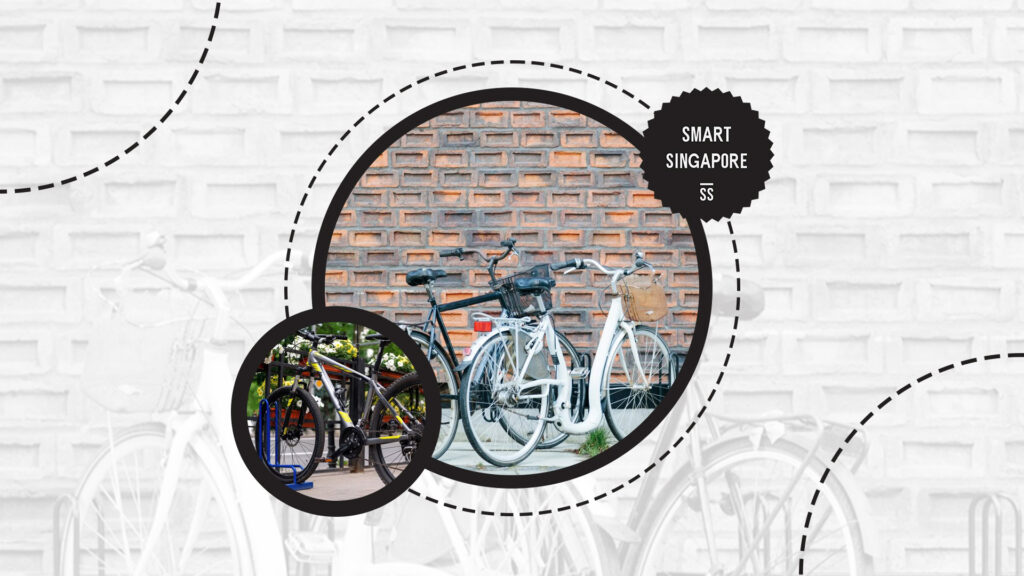
Cycling devices are not allowed to be towed by other vehicles while on the road. If your device is malfunctioning, call for help and store it inside a vehicle or device holders attached to the vehicle.
Attach device lights properly
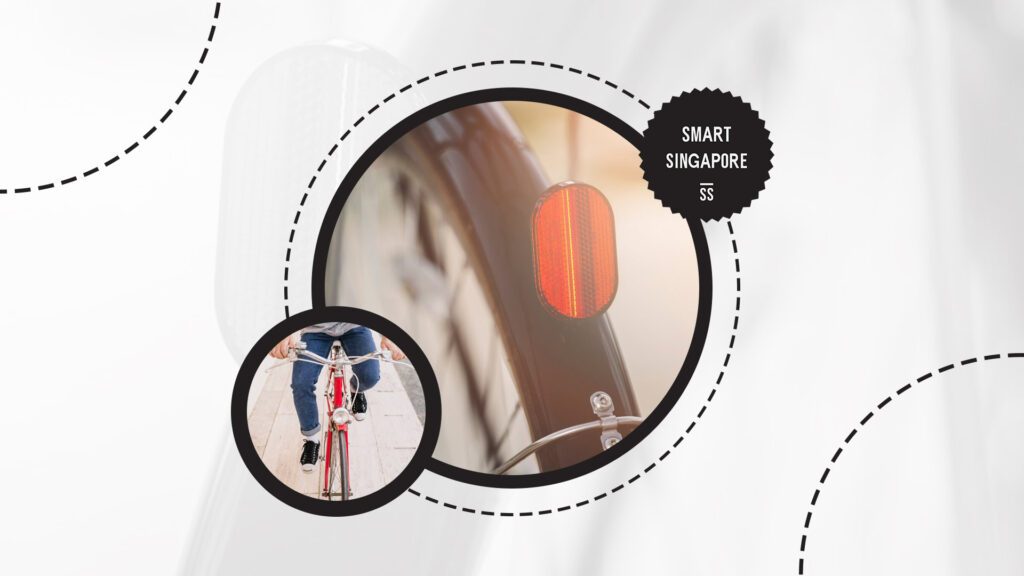
When cycling in the dark, it’s important to attach lighting to prevent road blindness. In Singapore, red lights are required to be attached to the rear of the device.
Attaching red lights to the front of the device is prohibited. Make sure that these lights are in good condition each time you take your device out for a ride on roads or public paths.
Get off the device if the road becomes too steep for you
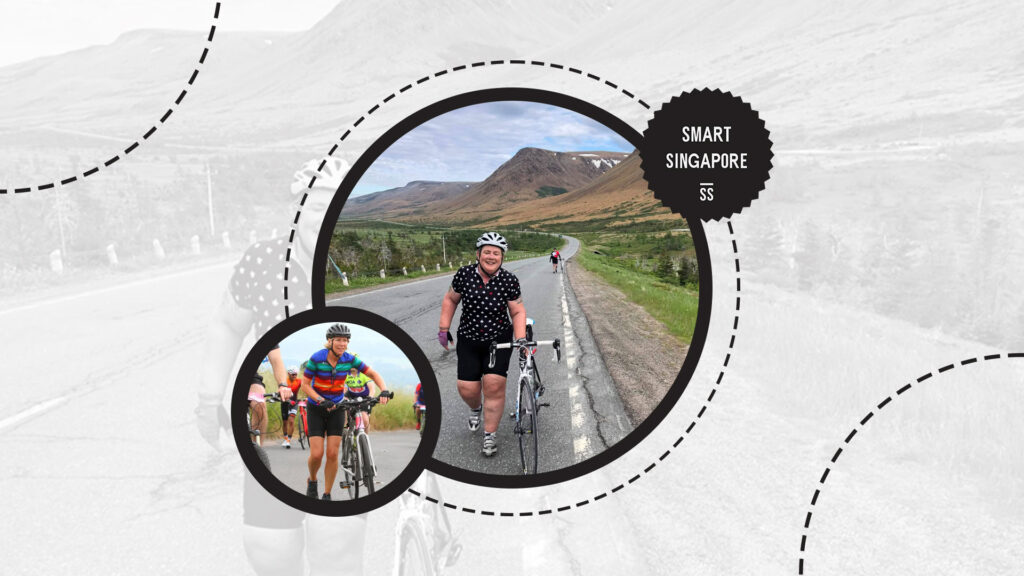
Cycling uphill can be challenging for other cyclists, and if you find it difficult to do so, it’s best to get off the device and walk it towards your destination. Always remember to stay on designated cycling lanes or the leftmost side of the road.
If you’re in a cycling group, make sure that you have a buddy assisting you. Once you reach the end of the uphill climb, you can hop on your device and continue with the ride.
Maintain your speed when going downhill
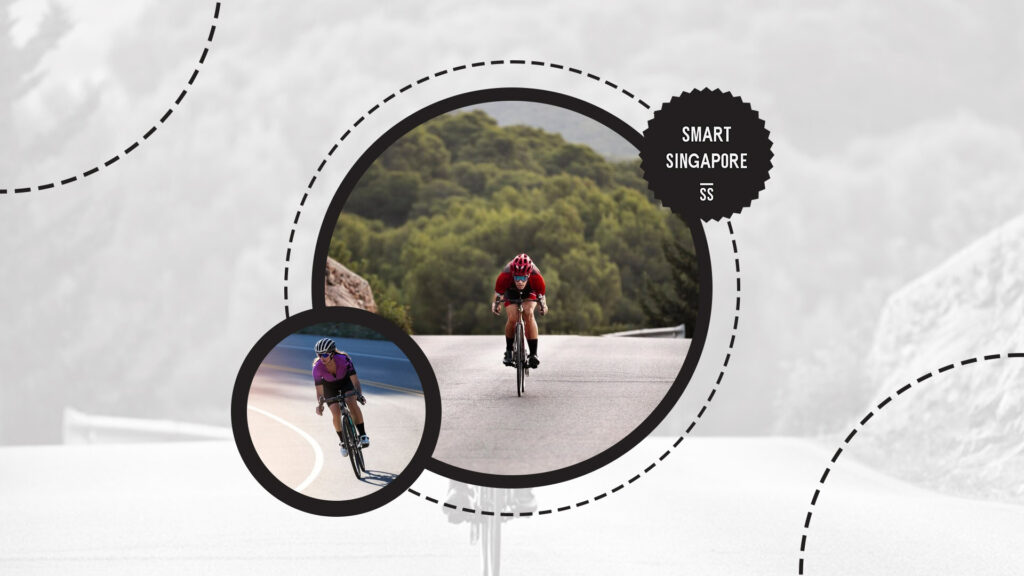
When going downhill, make sure to maintain your speed and keep your hands on the hand brakes to prevent overspeeding, even if there are no cars or other cyclists behind or in front of you.
Don’t speed through downhill lanes when there are sharp turns at the end. Maintain your distance as you ride down and don’t leave your cycling group behind.
Wear bright-coloured clothing
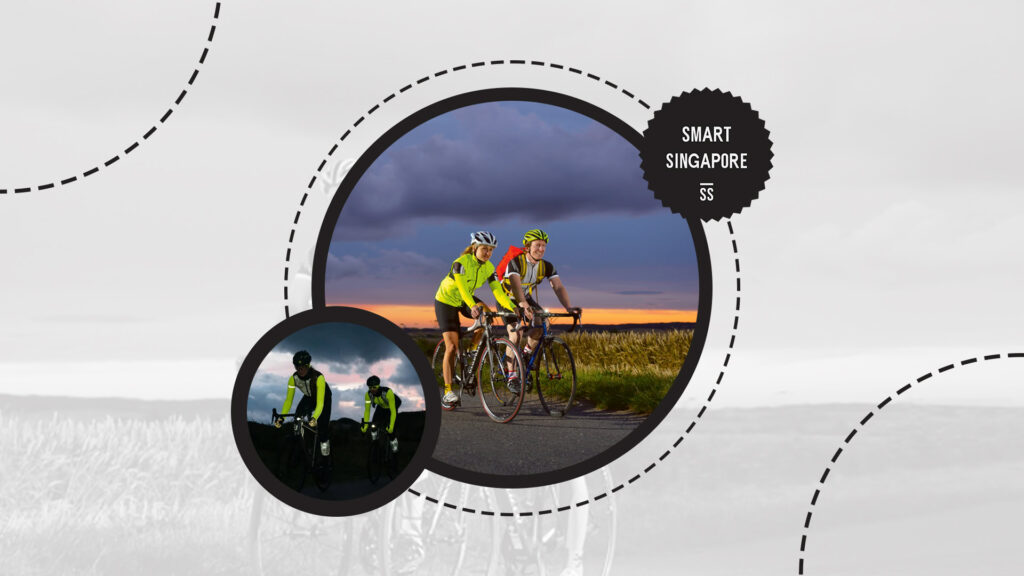
Wearing bright-coloured clothing can increase visibility to other drivers and pedestrians on the road or on public paths. Neon colours in yellow, orange, or green are helpful!
You can use reflective clothing when cycling in the dark, but make sure you pair them with proper lights attached to your device. You can attach these reflective materials to your helmet or on the backside of your shirt.
Don’t use your phone or other electronic devices while on the road
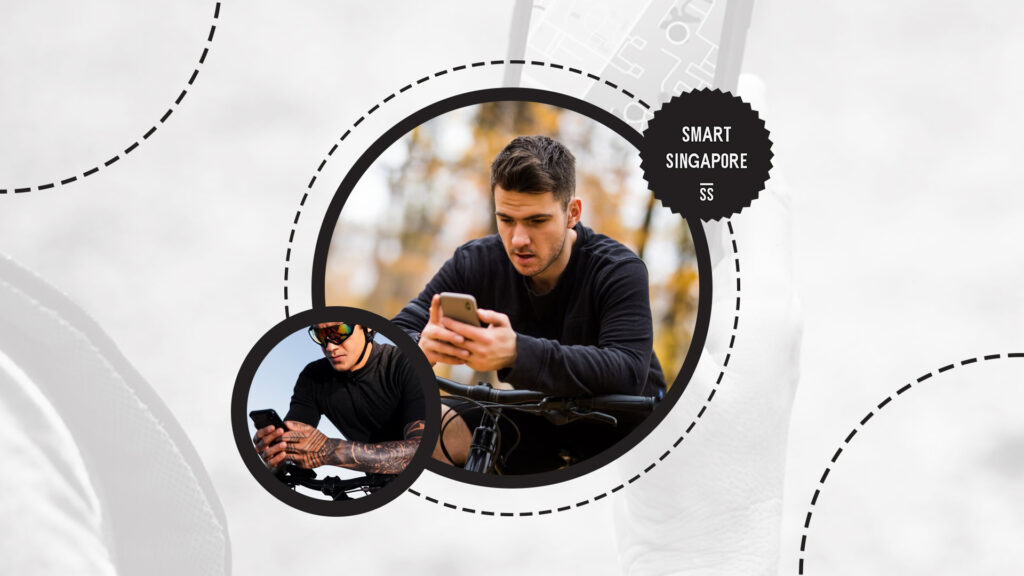
It’s against the LTA rules to use your mobile phones or other electronic devices while cycling on roads and public paths. As much as possible, avoid any sort of distraction while cycling, especially when you’re riding with a group or child.
Always keep your attention sharp on the road and watch out for other drivers, pedestrians, and cyclists. You are, however, allowed to mount your mobile devices on your handlebar, but you can’t use it while cycling on the road.
Keep off of road tunnels and expressways
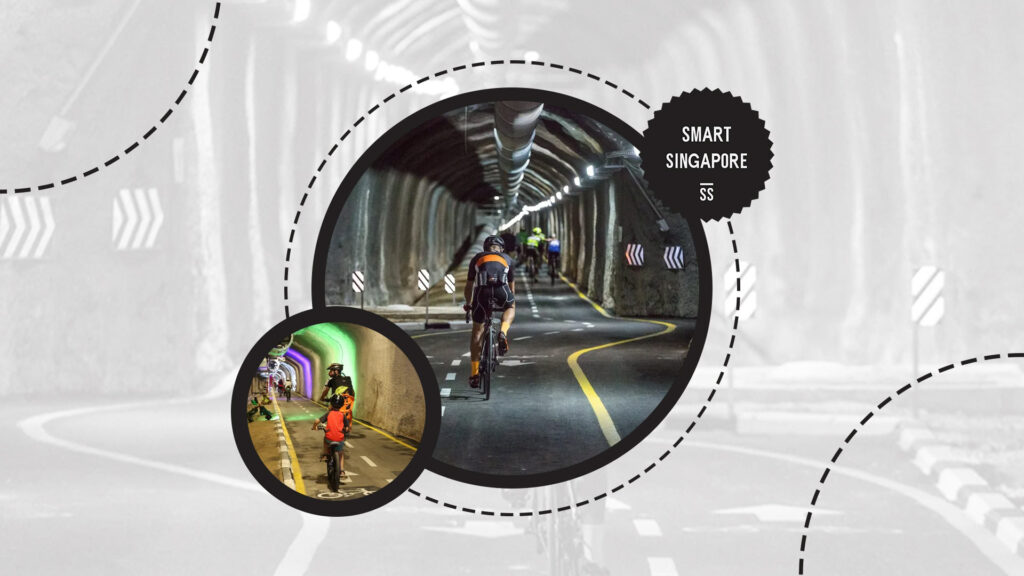
Cyclists using bicycles and power-assisted devices are not allowed to cycle on expressways and road tunnels due to the increasing number of motorists driving at high speeds.
The LTA provided a list of expressways and road tunnels that cyclists aren’t allowed to ride through, and these are
- Bukit Timah Expressway
- Central Expressway
- Marina Coastal Expressway
- Pan Island Expressway, Tampines Expressway
- North-South Corridor
- Ayer Rajah Expressway
- East Coast Parkway
- Kallang-Paya Lebar Expressway
- Kranji Expressway
- Seletar Expressway
- Tampines Expressway
- Fort Canning Tunnel
- Sentosa Gateway Tunnel
- Woodsville Tunnel
Park your bicycles in designated parking spaces
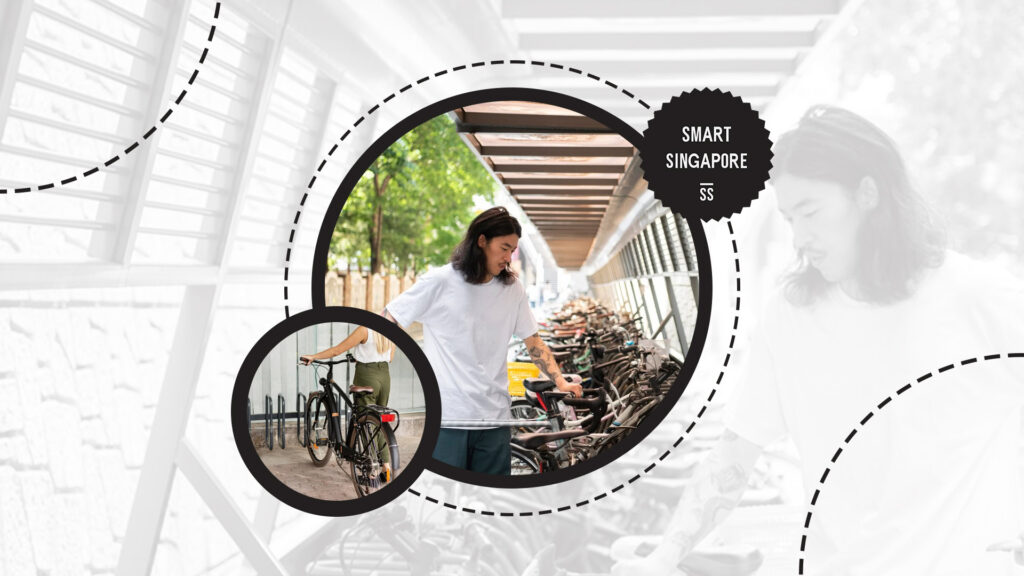
Only park your bikes in designated parking slots for bicycles. These are usually within yellow boxes or bicycle racks.
If you’re using a shared bicycle, don’t forget to park it correctly and end your trip by scanning the QR codes on the edge of the yellow boxes or bicycle racks.
Don’t carry passengers beyond the capabilities of the device
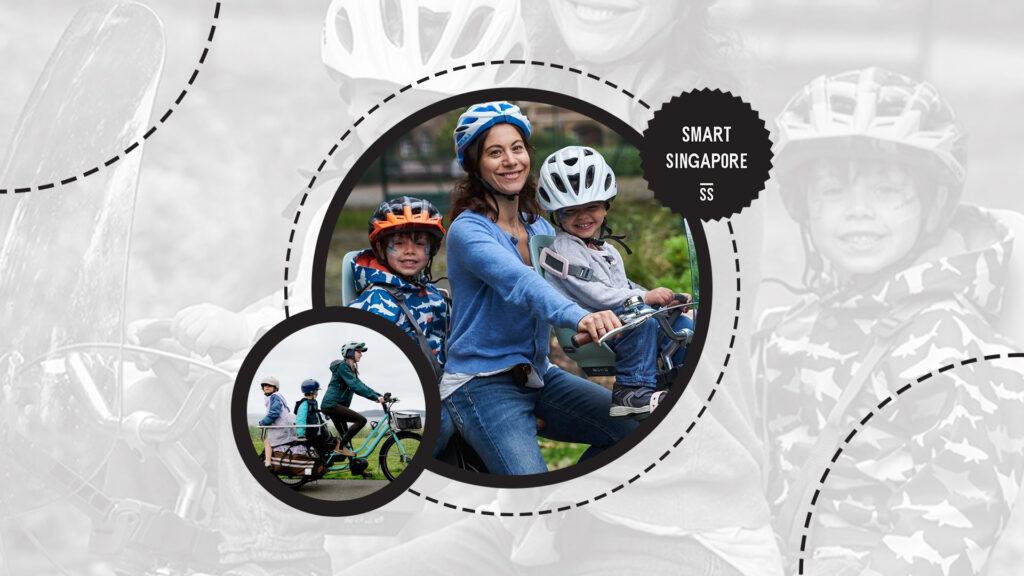
If your bicycle can only carry one person, then only ride with one person. It’s not safe to carry passengers on your bike beyond its seating capacity!
Who regulates cycling activities in Singapore?
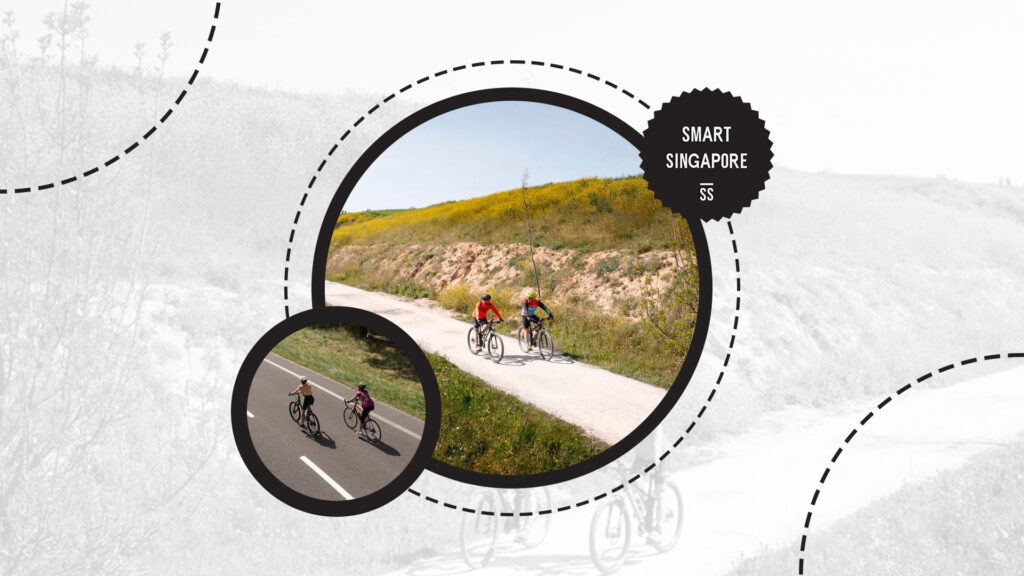
The Land Transport Authority is the government agency that mandates rules and regulations for cyclists and cycling activities in Singapore. They regulate cycling in line with the rules stated in the Active Mobility Act (AMA) enforced in 2018.
The AMA covers bicycles, three-wheeled pedal cycles, cargo cycles, power-assisted bicycles, motorised and non-motorised cycles, and personal mobility aids which include motorised wheelchairs and scooters.
Where can I cycle in Singapore?
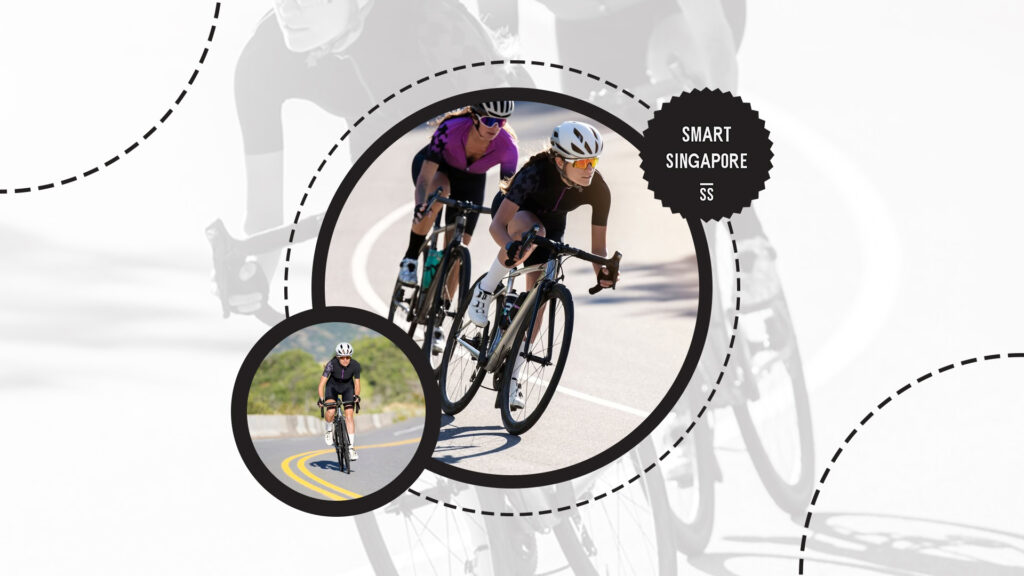
The LTA regularly updates a table of where cyclists are allowed to bring their bicycles and personal mobility aids across pathways, cycling trails, streets, and roads in the city.
Refer to the table below for more information.
| Footpath | Cycling Path | Road | |
| Bicycle | Yes | Yes | Yes |
| Power-assisted Bicycle (or E-bike) | No | Yes | Yes |
| Motorised Personal Mobility Device (PMD)* | No | Yes | No |
| Non-motorised PMD | Yes | Yes | No |
| Personal Mobility Aid (PMA)** | Yes | Yes | No |
*Includes electronic scooters, electric unicycles, and hoverboards.
**Includes mobility scooters or electric wheelchairs
What are the device and user requirements for cycling?
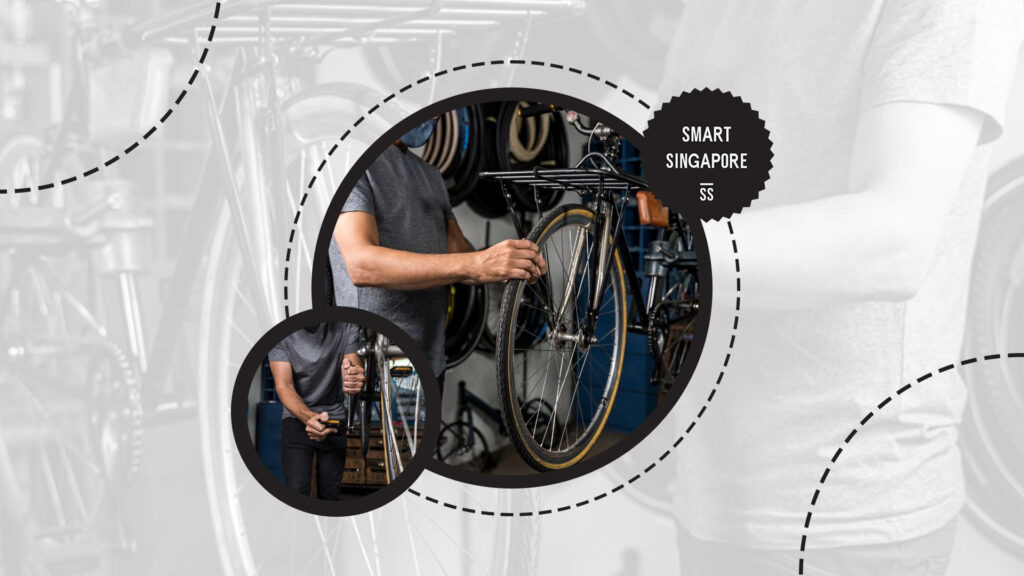
Device and user requirements differ for manual and motorised cycles. There are also specific colour and accessory requirements for each type of device.
Manual Bicycles and Three-Wheeled Pedal Cycles
The following are required for manual bicycles and three-wheeled pedal cycles:
- On public paths: a maximum weight of 20 kg and width of 70 cm
- On roads: a maximum length of 260 cm and width of 130 cm
There should also be at least one functioning brake attached to the handlebar.
Manual Recumbents
Manual recumbents require a maximum width and weight of 70 cm and 20 kg on public paths and a maximum width and length of 130 cm and 260 cm on roads.
Users who use manual recumbents on roads must attach a bright-coloured flag on the device.
Motorised Personal Mobility Devices
Motorised Personal Mobility Devices (which also include electric scooters) require a maximum weight and width of 20 kg and 70 cm on both public paths and roads. You can only ride the device at a maximum speed of 25 km per hour.
Also, users under 16 years of age are not allowed to ride electric scooters in public paths unless they are supervised and accompanied by an adult.
